I'm trying to pair "Observed" and "Expected" bars for plastic counts at each site but can't figure out how to include my "Expected" columns in my geom_col plot. My report is due on the 30th (yikes!)
I'd like something akin to this (see below) but not using Excel (I've spent 2 days in R trying to crack it and am determined to succeed!)

My data frame is as follows:
df <- data.frame(
Site_name = c("Albermarle", "Cabo Douglas", "Punta Puntas",
"Floreana Black Beach", "Punta Cormoran", "Loberia"), Plastic_pieces = c(44, 215, 29, 31, 42, 260),
Expected = rep(c(103.5), times = 6))
My geom_col code so far is:
ggplot(df, aes(x=Site.Name, y=Plastic_pieces, fill = Site.Name ))+
geom_col()+
theme_classic()+
labs(y="Number of macroplastic pieces", x="Site Name")+
theme(axis.line.x = element_line(size = 0.3, colour = "black"),
axis.line.y = element_line(size = 0.3, colour = "black"),
axis.line = element_line(size=1, colour = "black"),
panel.grid.major = element_blank(),
panel.grid.minor = element_blank(),
panel.background = element_blank(),
text=element_text(size = 12),
axis.text.x=element_text(colour="black", size = 8),
axis.text.y=element_text(colour="black", size = 12),
axis.text.x.bottom = element_blank(),
axis.title.x = element_blank(),
axis.ticks.x.bottom = element_blank())+
scale_fill_discrete(name="Site Name")+
geom_text(aes(label=Plastic_pieces), position=position_dodge(width=0.9), vjust=-0.25)

I saw some code online that looked like it could help but I got pretty much the same result as above except that the bars were in descending order:
df %>%
group_by(Plastic_pieces, Expected) %>%
summarise(n=sum(Plastic_pieces, na.rm = TRUE)) %>%
arrange(desc(Plastic_pieces)) %>%
ggplot(aes(x=df$Site.Name, y=Plastic_pieces, fill = df$Site.Name)) +
geom_col(position='dodge')

If anyone can help I'd be very grateful!
Cheers!
